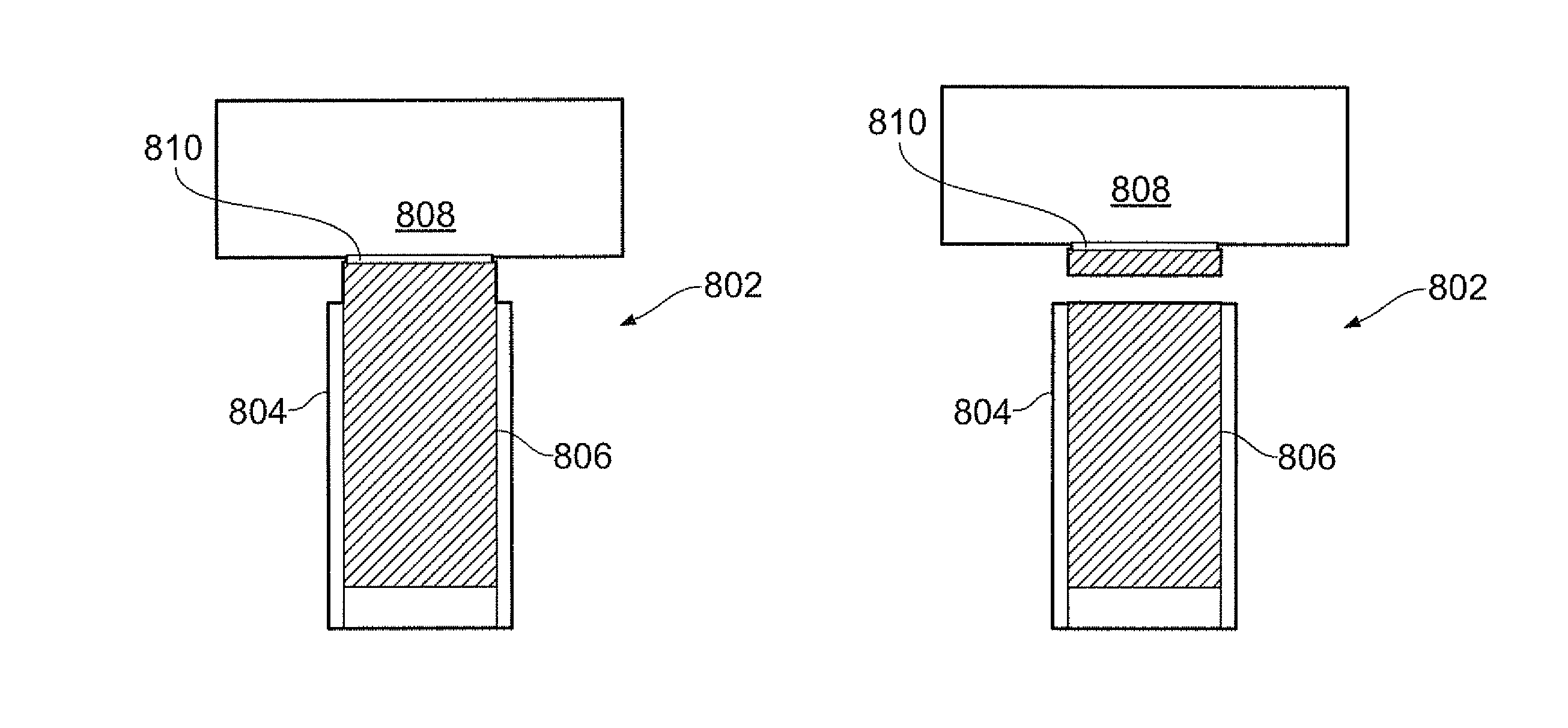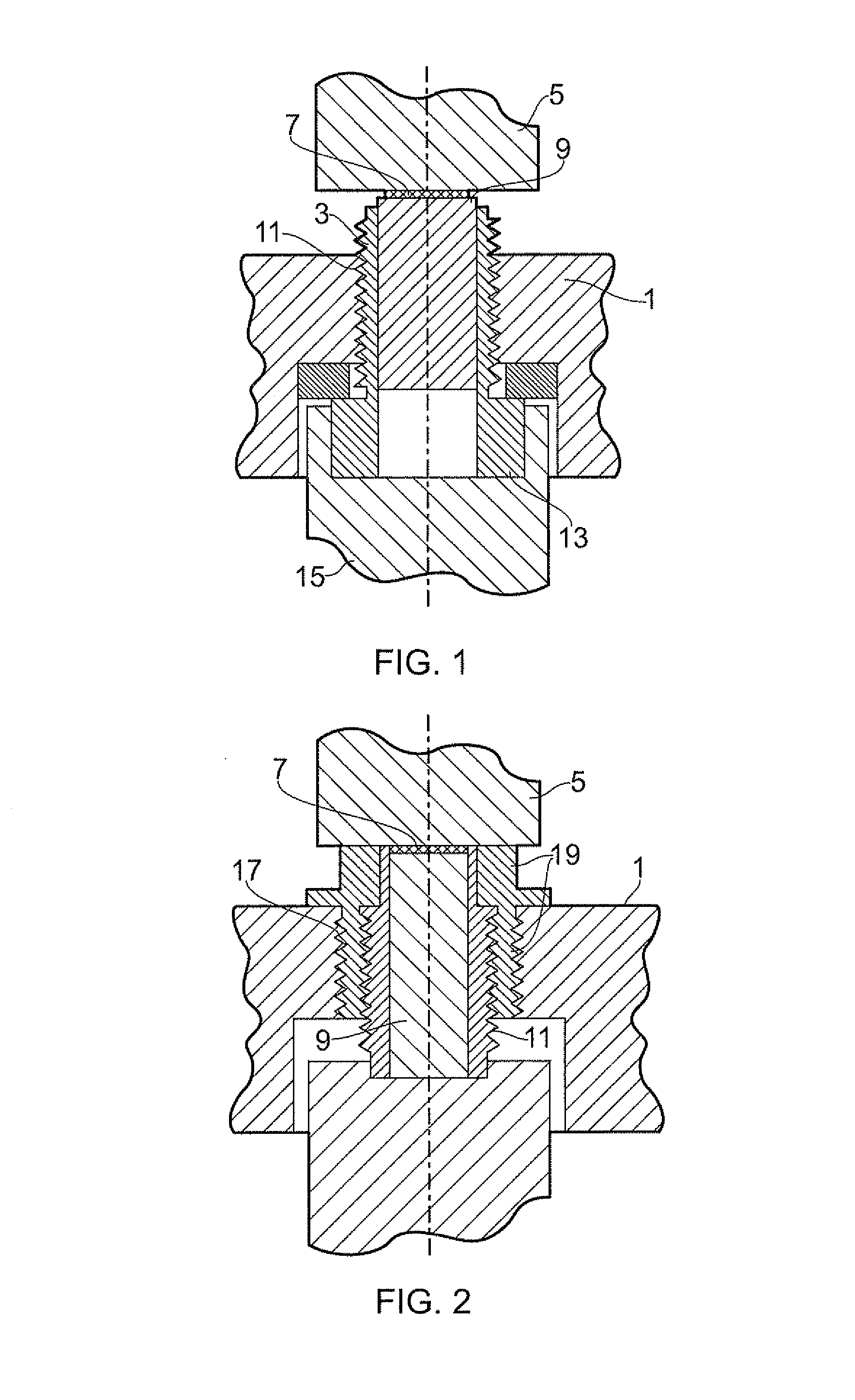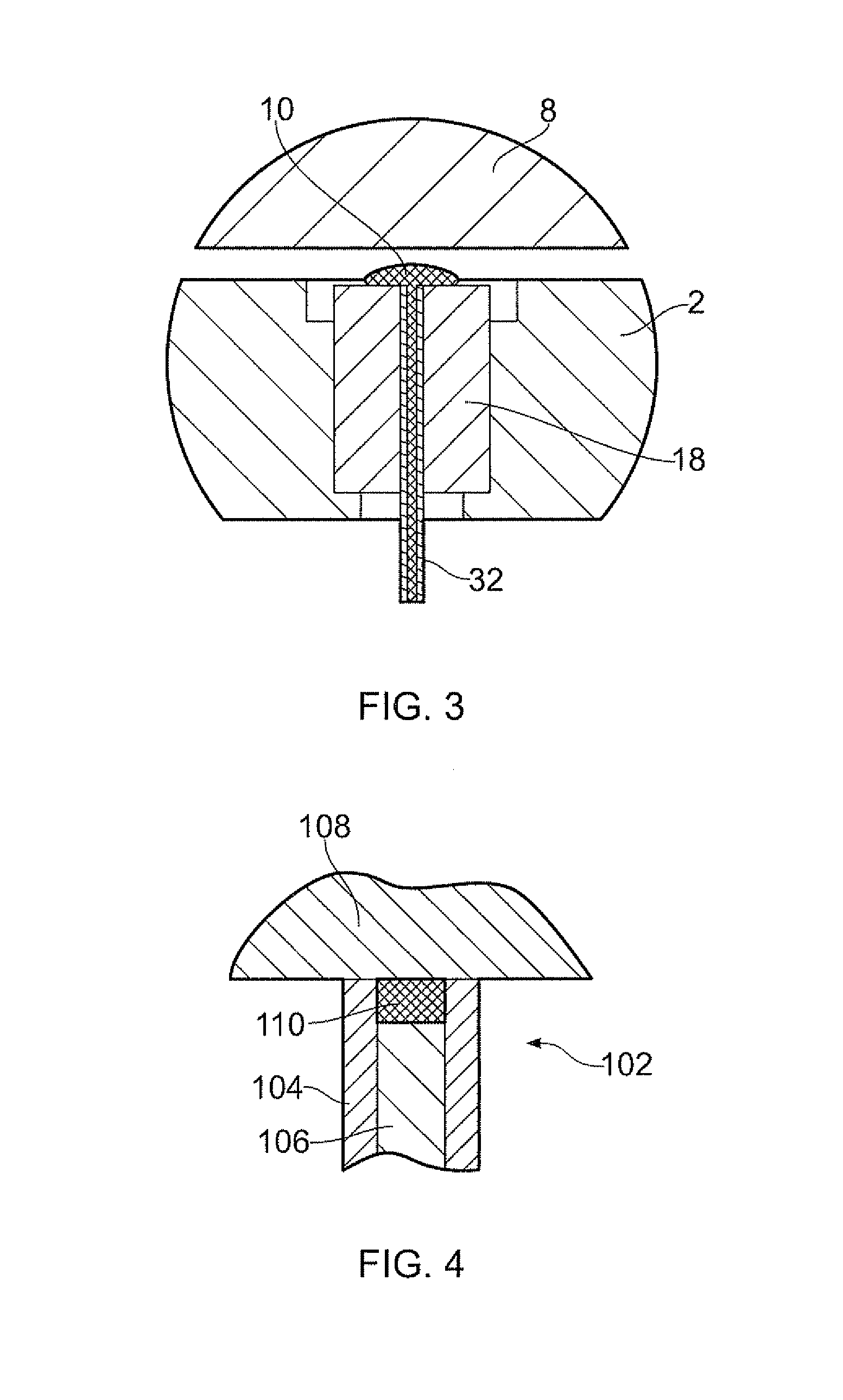Adhesive fastening elements for holding a workpiece and methods of de-bonding a workpiece from an adhesive fastening element
a technology of adhesive fastening elements and workpieces, which is applied in the direction of applications, manufacturing tools, machine supports, etc., can solve the problems of corrosion problems, inconvenient use, and inability to meet the requirements of use,
- Summary
- Abstract
- Description
- Claims
- Application Information
AI Technical Summary
Benefits of technology
Problems solved by technology
Method used
Image
Examples
Embodiment Construction
[0156]With reference to FIG. 3, an embodiment of an adhesive fastening element 2 in accordance with an aspect of the invention is shown. The adhesive fastening element 2 comprises a core formed from an optical material 18. An adhesive delivery tube 32 is embedded in the adhesive fastening element 2 and extends through the optical material 18. The adhesive delivery tube 32 provides a conduit for supplying a photo-activated adhesive 10 to an exterior surface of the adhesive fastening element 2 where it may be used to bond a workpiece 8 to the adhesive fastening element 2.
[0157]The adhesive 10 is pumped through the adhesive delivery tube 32 using a suitable pumping means (not shown). Once a sufficient amount of adhesive has been supplied to the surface of the adhesive fastening element 2, a bond may be formed between the adhesive fastening element 2 and the workpiece 8 by supplying light to the adhesive 10 through the optical material 18 to cure the photo-activated adhesive 10. In this...
PUM
| Property | Measurement | Unit |
|---|---|---|
| temperatures | aaaaa | aaaaa |
| temperatures | aaaaa | aaaaa |
| thick | aaaaa | aaaaa |
Abstract
Description
Claims
Application Information
 Login to View More
Login to View More - R&D
- Intellectual Property
- Life Sciences
- Materials
- Tech Scout
- Unparalleled Data Quality
- Higher Quality Content
- 60% Fewer Hallucinations
Browse by: Latest US Patents, China's latest patents, Technical Efficacy Thesaurus, Application Domain, Technology Topic, Popular Technical Reports.
© 2025 PatSnap. All rights reserved.Legal|Privacy policy|Modern Slavery Act Transparency Statement|Sitemap|About US| Contact US: help@patsnap.com



